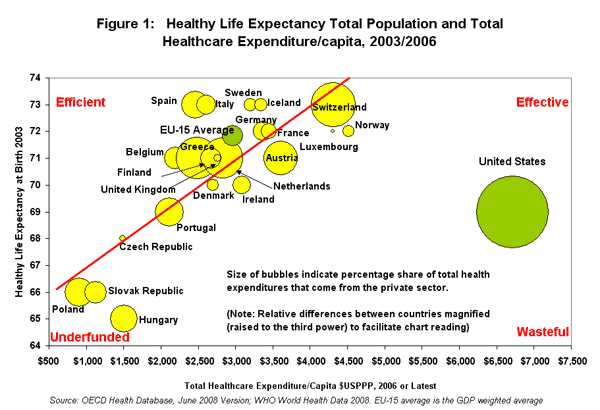… Obamacare
A Harvard study had estimated the cost of the Iraq and Afghanistan wars at $4-6 trillion. US War appropriations 2001 to 2015 was $1.6 trillion and easily $680 billion more for next ten years
&&&&&&&&&&&&&&&
A global (across Asia, Europe, middle east and Africa) high speed rail network with total length of 93,000 kilometers (58000 miles), or 8.5 times the total length of high-speed railways operating in China is planned. It was forecast that by the year 2030, 60% of the planned rail lines (40,000 miles) would be completed.
China plans to build 34,600 km of high-speed railways in the country. The Chinese government has also negotiated agreements to build 34,700 km of high-speed railways for other countries, including 26,300 km allocated for the “Silk Road Economic Belt” and “21st Century Maritime Silk Road” initiatives.
The potential market for Chinese high-speed railway construction companies is approximately 69,400 km [43000 miles) in overall high speed track length, or 15 trillion yuan (US$2.4 trillion) in total investment, of which, train sales account for 1-1.5 trillion yuan (US$160-$240 billion).

China global high speed rail will boost trade, economic and politic ties to 38 countries throughout Europe, Asia and Africa.
But his statement was misleading because the way the law was designed, the major spending provisions didn’t kick in until 2014.
A new CBO (Congressional Budget Office) analysis [starting on page 121 of 184 page document] finds that between fiscal years 2016 and 2025, spending on the law’s expansion of Medicaid will cost $920 billion and insurance exchange subsidies will cost nearly $1.1 trillion. The major spending provisions, taken together, will total $1.993 trillion.
CBO and JCT currently estimate that the ACA’s coverage provisions will result in net costs to the federal government of $76 billion in 2015 and $1,350 billion over the 2016–2025 period.
Compared with the projection from last April, which spanned the 2015–2024 period, the current projection represents a downward revision in the net costs of those provisions of $101 billion over those 10 years, or a reduction of about 7 percent.
By 2025, the end of the projection period, the CBO projects that Obamacare will increase insurance coverage by a net of 27 million, while 31 million will remain uninsured.
The number of people covered by private health insurance increased in 2012 to 198.8 million, up from 197.3 million in 2011. The percentage and number of people with health insurance increased in 2012 to 84.6 percent and 263.2 million, up from 84.3 percent and 260.2 million in 2011.
According to the United States Census Bureau, in 2012 there were 48.0 million people in the US (15.4% of the population) who were without health insurance.
The USA is spending about $2 trillion to increase healthcare coverage by 6.8-10% of the population depending upon how it is counted. If you allocate $2 trillion to the projected differential of 17 million fewer uninsured then it costs $118,000 per reduced uninsured over a decade.
US War appropriations 2001 to 2015 was $1.6 trillion and easily $680 billion more for next ten years
The US will have continuing war and terror operations that will be at least $500-680 billion over ten years and could easily be far higher.
Because of these considerations, CBO has also produced alternative policy projections of war spending that reflect specific assumptions about future troop levels.
In FY2015, for example, CBO’s alternative war funding projection assumes that troops will decline from about 100,000 U.S. troops deployed in country and in the region in 2014 to 70,000 in 2015, 50,000 in 2016, and 30,000 in 2017, remaining at that level through FY2024.
These CBO estimates do not reflect troop levels in particular countries and include proportionate reductions in diplomatic operations and foreign aid.
Under this alternative scenario, CBO projects annual war funding would decline from $58 billion in
FY2015 to $30 billion in FY2017, and continue at that level for the rest of the decade.
This estimate totals $340 billion in budget authority over 10 years, about half of the $646 billion in CBO’s baseline estimate. CBO does not provide any additional details about the basis for its war cost estimate, which averages about $1 million per troop
A Harvard study had estimated the cost of the Iraq and Afghanistan wars at $4-6 trillion. It is not counting Syria and continued operations but the incremental and persistent Veterans Affairs costs and other similar lingering costs.
This includes long-term medical care and disability compensation for service members, veterans and families, military replenishment and social and economic costs. The largest portion of that bill is yet to be paid. Since 2001, the US has expanded the quality, quantity, availability and eligibility of benefits for military personnel and veterans. This has led to unprecedented growth in the Department of Veterans Affairs and the Department of Defense budgets. These benefits will increase further over the next 40 years.
Economists and return on investmetn
Many economists say China will not get good return on the high speed rail investment. However, the political and economic benefits look pretty good compared to what the US is getting for war spending (which does not include bloated defense procurement) or for Obamacare.
NextBigFuture
SOURCES – Congressional Budget Office, Congressional Research Service, Wikipedia, WantChinaTimes,
http://nextbigfuture.com/2015/02/china-spending-to-build-40000-miles-of.html?utm_source=feedburner&utm_medium=feed&utm_campaign=Feed%3A%20blogspot%2Fadvancednano%20%28nextbigfuture%29





